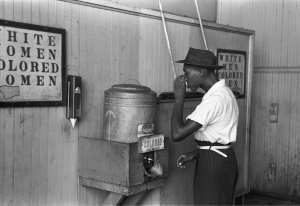
Although racial slavery is an element of the past, the statistics from the Mexican American project study sample and other surveys show that the United States currently experiences another form of racism termed ‘domestic racism’. Domestic racism also known as social stratification is a system of legitimized social inequalities in which a group of people receive more of the society’s wealth, justice, opportunities and prestige at the expense of others. In the US, the advantaged group consists of rich white and – in some cases – black males while the disadvantaged are minorities consisting of African Americans, Native Americans, Mexican Americans, poor Caucasians and Muslims.
The statistics from The Mexican American project study which was first conducted in 1965 showed that darker Mexicans reportedly experienced more cases of discrimination than their lighter counterpart and women. Also, the education level a Mexican American received was directly proportional to the discrimination he or she experienced. This meant that educated Mexican Americans were more likely to be stereotyped than uneducated individuals of same race. Approximately 40 years later, the same feasibility study was conducted on the Mexican American population and the results showed a slight reduction in the level of discrimination. Darker Mexican Americans still wen through discrimination while the educated were less likely to be hired than their Caucasian colleagues with similar qualifications.
In 2013, the Sentencing Project submitted a chilling report on the racial disparities in the United States criminal and justice system. The statistics from this report showed that although 12% of the United States population was black, black Americans made up 30% of people arrested for property offence and 38% of those arrested for violent offenses. The young were not also left out. Black American teenagers accounted for 16% of the children in the United States but they made up 28% of the kids arrested for juvenile offences.
The above demographic example coupled with statistical numbers from the Report of the Sentencing Project to the United Nations draws a clear picture of the institutional racism minorities experience in the United States. It is also important to emphasize the reduced cases of discrimination Mexican Americans have faced over a 50 year period as well as the role feasibility studies and continuous educational coverage has played in reducing racism. But more can still be done if we as one nation continue to accurately document cases of institutionalized or domestic racism with a view to denounce it, so that the entire human race may become more tolerant to one another.
References
- Ortiz, D. Telles, E. (2008). Generations of Exclusion, Mexican Americans, Assimilation and Race, 49-50, 53, 65-67.
- Ortiz, D. Telles, E. (2011). The Mexican American Study Project II (MASP II), 1998-2000, 20-25.
- Michael, L. (2009) In Job Hunt, College Degree Can’t Close Racial Gap, available at
http://mobile.nytimes.com/2009/12/01/us/01race.html?referer= - Mustard, D. (2001). Racial, Ethnic, and Gender Disparities in Sentencing: Evidence from the Federal Courts, 285, 308-309.
- FBI Criminal Justice Information Services Division (2011). Crime in the United States, 43A, available at http://www.fbi.gov/about-us/cjis/ucr/crime-in-the-u.s/2011/crime-in-the-u.s.-2011/tables/table-43.
- The Sentencing Project (2013). Racial and the Criminal Justice System in the United States, 3, 5-6.
- Angela, Davis. (2008). Arbitrary Justice: The Power of the American Prosecutor, 5.
